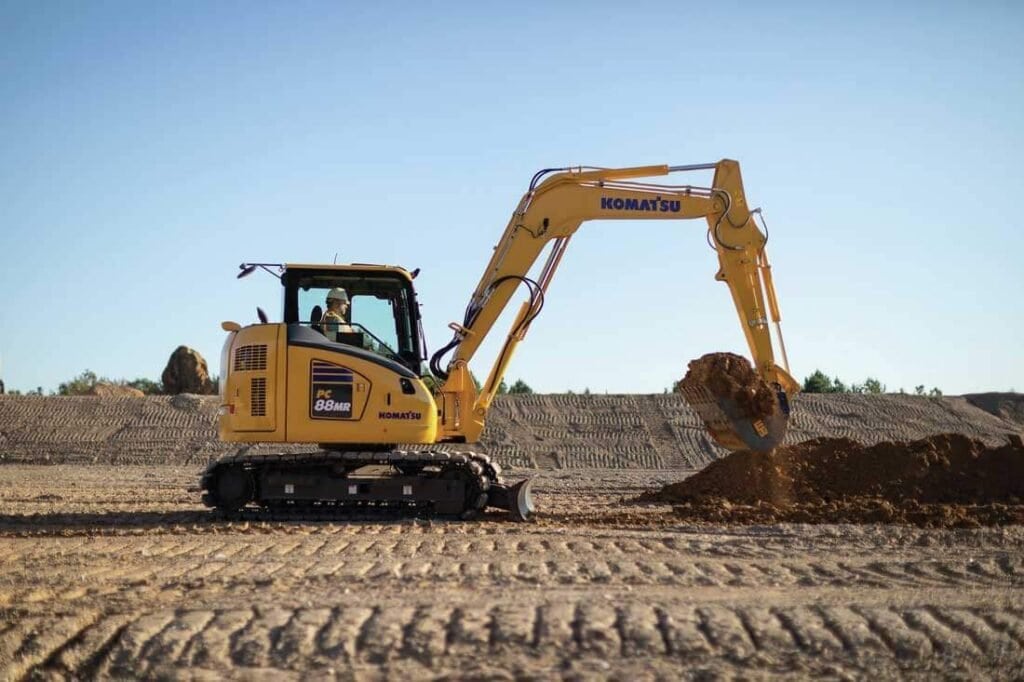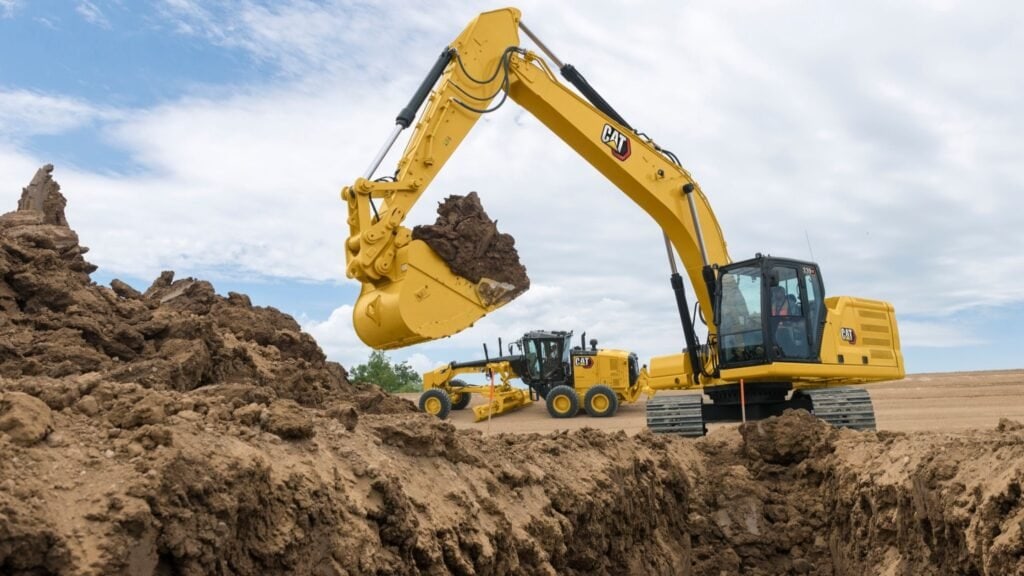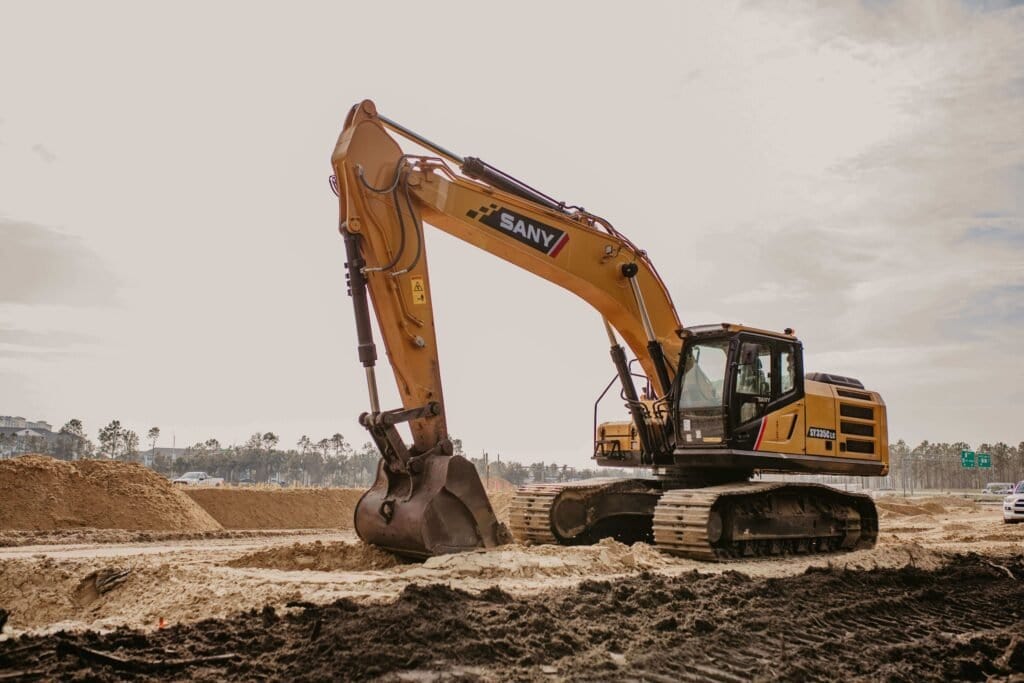Choosing the appropriate excavator sizes and weights may be challenging. Many purchasers encounter mismatched machinery, reduced production, and expensive expenses. Here’s how to choose the right size efficiently.
Escavatore sizes and weights range from compact mini excavators under 2 tons to massive mining excavators exceeding 90 tons. The right choice depends on your job type, digging depth, and terrain. Mini excavators are ideal for urban jobs; medium excavators for construction; large hydraulic excavators for heavy mining or infrastructure projects. Always match the task to the machine.
Let’s look more at how excavator sizes, weights, and brands such as CAT, Komatsu, and SANY affect performance and efficiency.

What Factors Determine Excavator Sizes And Weights?
Every excavator machine has specific capabilities determined by its weight, bucket capacity, and hydraulic power. Understanding what factors influence these characteristics allows you to make an informed decision from a large excavator size chart.
Excavator sizes and weights are decided by the project type, digging depth, ground conditions, and transportation requirements. A 13-tonne excavator, for example, is appropriate for medium-sized earthworks, whilst a 1-ton miniescavatore is perfect for tight urban environments.
When you compare excavator size charts, you’ll see that machines are divided into three categories: tiny, medium, and giant. The breadth of the excavator, the kind of track, and the engine output all have an impact on stability and digging power. A cat excavator size chart or komatsu excavator size chart helps you visualize the spectrum, which includes micro excavator models such as walk-behind micro excavators and big units like the cat 390 long reach.
Transport constraints also influence your decision. Larger models need permits or flatbed trailers. Excavator weight in kg is critical for logistics and fuel economy. Heavy units use more fuel yet provide more digging power. When planning equipment fleets, managers utilize excavator size comparison charts to balance cost and productivity. If you’re thinking about purchasing a Chinese excavator, compare its weight, durability, and availability of parts to big brands such as Cat, Sany, and Komatsu excavators.

How To Choose The Right Excavator Size For Your Project?
Comparing pricing is not the only consideration when choosing an excavator for your project. The incorrect excavator size might result in delays or damage. Understanding your work needs leads to optimal efficiency.
To match your task kind to the appropriate equipment, use a cat excavator size chart or an excavator sizes explained guide. Mini excavators are ideal for gardening; medium excavators excel at foundations; and giant excavators dominate mining.
When reading a cat excavator sizes and weights chart, consider the site circumstances. Tight spaces? Select a Kubota small excavator or a Bobcat mini excavator. Open construction? Choose between the CAT 320 excavator for sale and the CAT 315 for sale models.
Excavator size comparison and small excavator size charts are available online to help you determine digging depth, excavator breadth, and operating excavator weight. The greatest excavator for the money depends on your requirements. Compact excavators for sale provide adaptability, while hydraulic excavators provide sheer force.
If your budget is limited, look into used excavators for sale by owner or used mini excavators for sale advertisements. CAT mini excavators for sale, SANY mini excavators, and Komatsu excavators are recognized for their dependability and resale value. Consider renting a compact excavator for temporary work. To keep project finances under control, review the small excavator rental cost and excavator rental rates.

What Are The Typical Weights Of Mini, Medium, And Large Excavators?
Knowing the weight of your excavator might help you decide if it’s best suited for modest landscaping or large infrastructural jobs. Weight also influences transportation and safety compliance.
Mini excavators range in size and weight from 0.8 to 6 tons, while medium excavators weigh 6 to 25 tons and giant excavators weigh more than 25 tons. Match the excavator’s weight in kilograms to the task.
The mini excavator size chart typically includes tiny equipment such as 1-ton mini excavators, micro excavators, and compact excavators. These fit through tight gates and have a modest excavator width, making them perfect for household or small building projects.
Medium excavators, such as the CAT 315, CAT 320F, and Komatsu PC200, are common in commercial and road construction. Their excavators have an average weight of 20,000-25,000 kg, making them both stable and efficient.
For significant infrastructure or mining, massive CAT 390F specifications, CAT 390 extended reach, and dragline excavators rule the day. These behemoths can lift over 90 tons and withstand tremendous workloads.
When purchasing from China, many customers select secondhand excavators because they combine performance and cost-effectiveness. Always double-check excavator size chart data and certificates before delivery.

How Do Excavator Sizes And Weights Affect Transportation And Fuel Efficiency?
Both excavator size and weight have a direct impact on logistics and operational expenses. Lighter machines travel more easily, but bigger ones require particular transport and fuel planning. Smaller equipment, such as micro excavators, use less fuel and may fit on regular trailers. Larger hydraulic excavators require heavy-duty trucks, making excavator weight an important economic consideration.
According to most excavator size reference sites, a 2-ton small excavator consumes far less fuel per hour than a 13-ton excavator or CAT 330 excavator for sale. The breadth of an excavator also affects road suitability. Oversized equipment requires escort cars or route authorization.
Fuel consumption increases proportionately with excavator weight in kilograms, therefore matching task requirements to machine class saves money. For modest tasks, employing a cat 308 excavator rather than a cat 390 long reach saves gasoline.
Check out excavator size comparison tables to determine total ownership costs. Newer models, such as Mecalac excavators, Liebherr excavators, and Volvo excavators, use efficient engines. If you work in distant places, a compact excavator or Chinese small excavator might make transportation easier.
For long-term savings, choose the cat 323f or cat 320f models, which are recognized for their enhanced hydraulics and fuel management. Understanding excavator sizes and weights allows you to estimate both productivity and long-term profitability.

What Is The Best Excavator Size For Used CAT, Komatsu, And SANY Machines?
As a professional exporter with 15 years of expertise, I’ve witnessed how various CAT excavator sizes and weights, Komatsu excavators, and SANY excavators meet the demands of different consumers. For a good blend of power and mobility, the CAT 320D, Komatsu PC200-8, and SANY SY215C are still popular used models. Each provides dependability, optimal excavator weight, and worldwide parts availability.
Buyers in South America and Africa like cat excavators for sale due to their durability and resale value. The Komatsu excavator size chart stresses fuel efficiency and hydraulic precision, whilst SANY compact excavator models offer cost-effective power.
If you manage resales, search for apartments with confirmed inspection reports. As a China-based exporter, we constantly supply used excavators for sale, guaranteeing that each excavator satisfies international requirements. Customers may look into categories such as small excavators, compact excavators for sale, and used mini excavators.
Whether you are looking for a small excavator rental, an excavator rental, or a direct purchase, always consult an excavator size comparison chart and verify machine details before shipment. Choosing the appropriate excavator sizes and weights ensures maximum performance and profit in all markets.

Riepilogo
Understanding excavator sizes and weights leads to more informed investments, better fuel consumption, and increased efficiency. Choose prudently, and consult reputable excavator size chart info before making your next purchase.